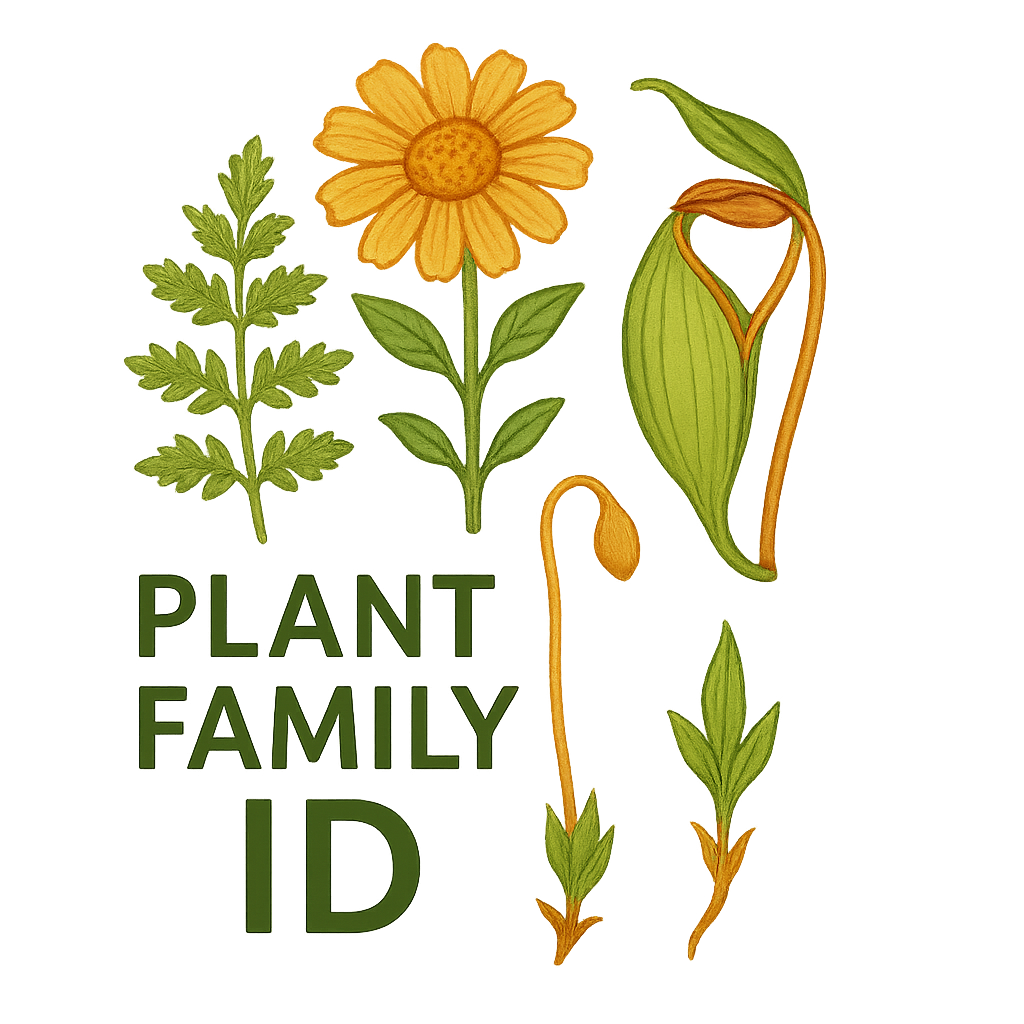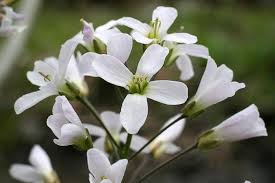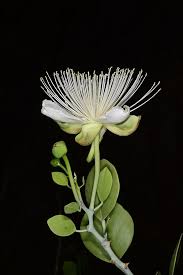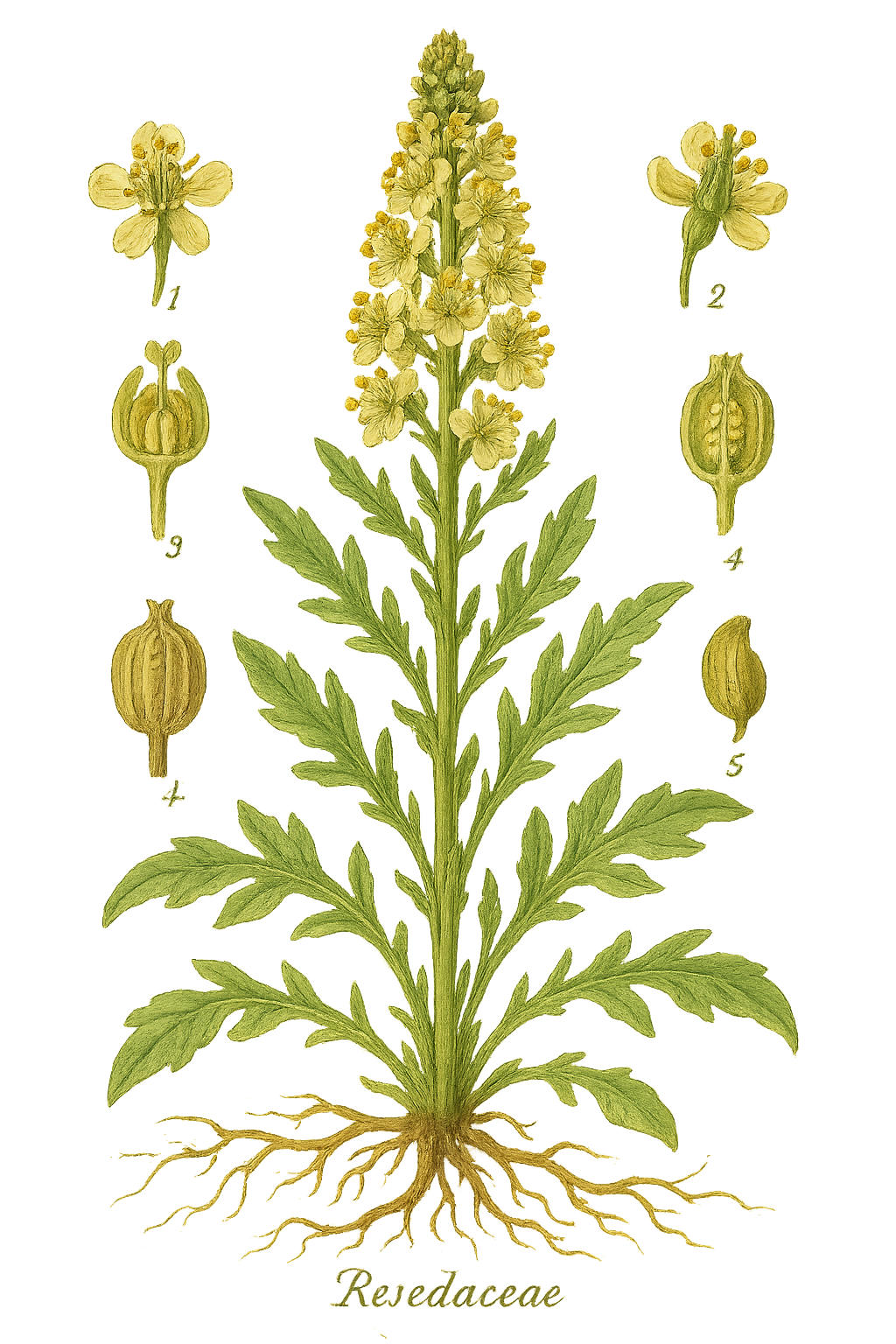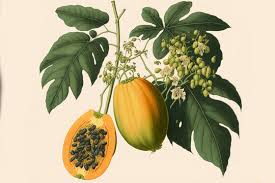Cleomaceae
Spider Flower Family
Cleomaceae, the Spider Flower family, consists mostly of annual herbs (sometimes shrubs) belonging to the order Brassicales. Found widely in tropical, subtropical, and warm temperate regions, they are closely related to the Brassicaceae (mustard family) and were formerly included in Capparaceae. Key features include typically alternate, palmately compound or lobed leaves, often zygomorphic flowers with 4 petals and usually 6 long stamens (giving a "spider-leg" appearance), a superior ovary often raised on a stalk (gynophore), and fruit usually a silique-like capsule dehiscing to leave a persistent placental frame (replum). Several species, like Clammyweed (Polanisia), occur naturally or as weeds in Oklahoma and the central US.
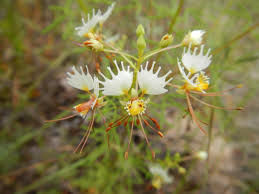
Overview
Cleomaceae is a family within the order Brassicales, positioned phylogenetically very close to the Brassicaceae (mustard family), likely as its sister group. It was separated from the Capparaceae (caper family) based on molecular evidence showing that Cleomaceae+Brassicaceae form a distinct clade separate from Capparaceae sensu stricto. The family comprises about 10-17 genera and around 300 species, distributed mainly in tropical and subtropical areas worldwide but extending into warm temperate zones.
Most members are annual or perennial herbs, though some are shrubby. They often possess glandular hairs making them sticky to the touch and frequently have a pungent odor due to the presence of glucosinolates (mustard oil glycosides), a chemical trait shared with Brassicaceae and Capparaceae. Leaves are typically alternate and characteristically palmately compound or lobed. Flowers are often showy, usually zygomorphic (bilaterally symmetrical), with 4 distinct petals (often clawed) and typically 6 stamens with long, exserted filaments resembling spider legs. A distinctive feature is that the superior ovary (and subsequent fruit) is often borne on a noticeable stalk called a gynophore. The fruit is typically an elongated capsule that strongly resembles the silique of Brassicaceae, usually splitting open via two valves to leave the seeds attached to a persistent central frame, the replum.
While some species like Cleome hassleriana are popular garden ornamentals (Spider Flower), others are considered weeds. Several species, particularly in the genus Polanisia (Clammyweeds) and related groups (sometimes classified within Cleome sensu lato), are native or naturalized in North America, including Oklahoma, often found in sandy soils or disturbed areas.
Quick Facts
- Scientific Name: Cleomaceae Bercht. & J.Presl
- Common Name: Spider Flower family
- Number of Genera: Approximately 10-17
- Number of Species: Approximately 275-300
- Distribution: Widespread in tropical, subtropical, and warm temperate regions.
- Evolutionary Group: Eudicots - Rosids (Malvids / Eurosids II) - Order Brassicales
Key Characteristics
Growth Form and Habit
Predominantly annual or perennial herbs, sometimes becoming somewhat shrubby at the base. Plants are often covered with simple or branched glandular hairs, making them feel sticky (viscid) and often emitting a strong, pungent, or unpleasant odor (due to glucosinolates and other compounds).
Leaves
Leaves are usually arranged alternately and spirally along the stem. They are typically palmately compound, usually with 3 to 7 leaflets radiating from the end of the petiole. Sometimes leaves are palmately lobed, or the uppermost leaves near the inflorescence may be simple. Leaves are petiolate. Stipules, when present, are usually small and simple, sometimes spine-like, or absent.
Inflorescence
The inflorescence is typically a terminal raceme, which is often bracteate (flowers subtended by bracts, which may be leaf-like below) and frequently elongates significantly as the fruits develop.
Flowers
Flowers are usually bisexual (perfect) and typically distinctly zygomorphic (bilaterally symmetrical), although some can be nearly actinomorphic. They are generally 4-merous.
- Calyx: Consists of 4 sepals, which are usually distinct (free) or only slightly fused at the base, often falling off early (deciduous).
- Corolla: Consists of 4 petals, which are free and often prominently clawed (having a narrow stalk-like base and an expanded blade). Petals are frequently unequal in size or orientation (e.g., pointing upwards), contributing to the zygomorphy. Colors include white, yellow, pink, rose, or purple.
- Androecium: Stamens typically number 6 (though the range is 4 to many across the family, 6 is common and links to Brassicaceae). Filaments are often very long and extend far beyond the petals (exserted), contributing to the "spider flower" appearance. Stamens are frequently borne, along with the gynoecium, on an elongated section of the receptacle called an androgynophore.
- Gynoecium: The ovary is superior and typically consists of 2 fused carpels. A key feature is that the ovary is usually elevated on a distinct stalk called the gynophore (which itself arises from the androgynophore, if present). The ovary is generally 1-locular with numerous ovules attached to two parietal placentas (on the ovary walls), but a membranous false septum, the replum, often connects the placentas (as in Brassicaceae). A single style (short or long) terminates in a small, usually capitate (head-like) stigma.
Fruits and Seeds
The characteristic fruit is a capsule, typically elongated and linear (resembling a silique) or sometimes oblong or shorter (resembling a silicle). It is often borne on the persistent, elongated gynophore, making the fruit stipitate (stalked). The capsule typically dehisces by means of 2 valves separating from bottom to top, falling away to leave the seeds attached to the persistent, rim-like placental frame (the replum) and the associated false septum. Seeds are numerous, often kidney-shaped (reniform) or somewhat coiled, usually with a rough or patterned seed coat, and lacking significant endosperm.
Chemical Characteristics
Like their close relatives Brassicaceae and Capparaceae, members of Cleomaceae produce glucosinolates (mustard oil glycosides). Hydrolysis of these compounds produces isothiocyanates, responsible for the pungent smell and taste of many species. Glandular hairs producing sticky or volatile compounds are also common.
Field Identification
Cleomaceae species are often recognized by their herbaceous habit, palmate leaves, characteristic flowers with long stamens, stalked capsular fruits with a replum, and often pungent odor.
Primary Identification Features
- Habit: Mostly herbs (annual or perennial), often glandular-hairy/sticky.
- Alternate, Palmate Leaves: Leaves typically palmately compound or lobed (check upper leaves which may be simple).
- Zygomorphic Flowers (Usually): Flowers often bilaterally symmetrical with 4 distinct, often clawed petals.
- 6 Long Stamens (Typically): Stamens usually 6, with long filaments projecting well beyond petals ("spider legs").
- Stalked Ovary/Fruit (Gynophore): Look for the distinct stalk elevating the ovary and the resulting capsule.
- Silique-like Capsule with Replum: Fruit resembles a mustard silique, typically splitting via 2 valves leaving a persistent central frame (replum).
- Glucosinolate Odor: Crushed tissues often smell pungent or like mustard.
- Distribution/Habitat: Some species (Polanisia, Cleome) found in Oklahoma/central US, often in open, sandy, or disturbed areas.
Secondary Identification Features
- Flowers arranged in terminal racemes that elongate in fruit.
- 4 distinct sepals.
- Superior ovary, 2 carpels, parietal placentation.
Seasonal Identification Tips (relevant to Oklahoma)
- Spring/Summer: Look for vegetative growth; alternate palmate leaves and glandular hairs are good clues for Polanisia.
- Summer/Fall: Flowering period. Look for the distinctive zygomorphic flowers with long stamens, and check for the developing stalked capsules below opened flowers on the elongating raceme. Pungent smell often noticeable on hot days or when brushed.
- Habitat: Check roadsides, sandy fields, waste areas, riverbanks for native/weedy species like Polanisia dodecandra.
Common Confusion Points
- Brassicaceae (Mustard Family): Very closely related. Distinguished by Brassicaceae usually having actinomorphic flowers, 6 tetradynamous stamens (4 long + 2 short, not typically long-exserted like Cleomaceae), usually sessile ovary/fruit (lacking gynophore), and often pinnately lobed or simple leaves (though some are palmate).
- Capparaceae (Caper Family): Also related (Brassicales). Capparaceae often have >6 stamens (sometimes numerous), fruit structure may differ (e.g., berry, or capsule without typical replum), flowers can be actinomorphic or zygomorphic, leaves simple or palmate, often more shrubby. Gynophore present in many Capparaceae too.
- Fabaceae (Legume Family): Some have palmate leaves (Lupinus, Trifolium), but flowers are highly distinctive (papilionaceous or caesalpinioid), stamens often fused (diadelphous/monadelphous), and fruit is a legume pod.
Field Guide Quick Reference
Look For:
- Herbaceous habit (mostly)
- Alternate palmate leaves (common)
- Zygomorphic 4-petaled flowers (common)
- Typically 6 long, exserted stamens
- Ovary/fruit on a stalk (gynophore)
- Capsule fruit resembling silique
- Persistent placental frame (replum)
- Glucosinolate (mustard) smell
Key Variations:
- Flower symmetry (Zygomorphic to nearly Actinomorphic)
- Stamen number (usually 6, but can vary)
- Leaf complexity (Compound vs. Lobed vs. Simple upper)
- Degree of glandularity/stickiness
- Petal color (White, Yellow, Pink, Purple)
Notable Examples
Cleomaceae includes popular garden ornamentals as well as widespread native and sometimes weedy species, particularly in warmer climates.

Cleome species (e.g., C. hassleriana)
Spider Flower, Cleome
Includes the widely cultivated annual C. hassleriana (often sold as C. spinosa), known for its tall racemes of pink, purple, or white flowers with very long, projecting stamens and pistil (on gynophore). Leaves are palmately compound and stems often sticky/prickly. Other Cleome species (sensu lato) exist globally, some native to western N. America (C. serrulata, Beeplant).

Polanisia species (e.g., P. dodecandra)
Clammyweed
A genus native to North America, including P. dodecandra found in Oklahoma and central/eastern US. These annual herbs are notably glandular-sticky (clammy) with a strong odor. Leaves palmately compound (3 leaflets). Flowers are zygomorphic, typically whitish or pinkish with notched petals and 8-many stamens (name misleading). The stipitate capsule is sticky. Often found in sandy soils, roadsides, disturbed areas.

Cleomaceae Fruit Structure
Stipitate Capsule with Replum
The characteristic fruit is a capsule, often elongated like a mustard silique. It is typically borne on a distinct stalk (gynophore). When ripe, the two outer valves fall away, leaving the seeds attached to the persistent placental frame or partition known as the replum.

Tarenaya species (e.g., T. spinosa)
Tarenaya
A genus primarily from the Neotropics, sometimes included within Cleome by some authors. They are often robust herbs or subshrubs, sharing the general family characteristics of palmate leaves, zygomorphic flowers with long stamens, and stipitate capsules with replums. Some species possess spiny stipules.
Phylogeny and Classification
Cleomaceae belongs to the order Brassicales, within the Malvid clade of Rosids. Its phylogenetic position has been clarified significantly by molecular studies. Once broadly included within Capparaceae, Cleomaceae is now recognized as a distinct family that is much more closely related to Brassicaceae (the mustard family) than it is to Capparaceae sensu stricto.
Current evidence strongly suggests that Cleomaceae and Brassicaceae are sister families, forming a well-supported clade within the core Brassicales. This close relationship explains the shared features like the presence of glucosinolates and the silique-like fruit with a replum (though flowers are typically zygomorphic with 6 equal stamens in Cleomaceae vs. actinomorphic with 4+2 tetradynamous stamens in Brassicaceae). The separation from Capparaceae reflects the finding that Capparaceae s.s. represents a more distant branch within the order.
Position in Plant Phylogeny
- Kingdom: Plantae
- Clade: Angiosperms (Flowering plants)
- Clade: Eudicots
- Clade: Rosids (Malvids / Eurosids II)
- Order: Brassicales
- Family: Cleomaceae
- (Phylogenetic Position: Sister group to Brassicaceae)
Evolutionary Significance
Cleomaceae holds particular evolutionary interest:
- Sister Group to Brassicaceae: Provides a crucial comparison point for understanding the evolution of the massive and economically vital mustard family. It helps researchers infer ancestral traits and track the evolution of features like floral symmetry (zygomorphy vs. actinomorphy) and stamen arrangement (equal vs. tetradynamous).
- Evolution of Floral Symmetry: The prevalence of zygomorphy contrasts with the typical actinomorphy in Brassicaceae, offering insights into drivers of floral shape evolution.
- Fruit Morphology Bridge: The silique-like capsule with a replum clearly links it morphologically to Brassicaceae, despite floral differences.
- Glucosinolate Chemistry: Studying the diversity and function of mustard oils in Cleomaceae contributes to understanding the chemical ecology and evolution within the Brassicales order.
- Taxonomic Realignment: Its separation from Capparaceae is a good example of how molecular data can refine traditional classifications based on morphology.
